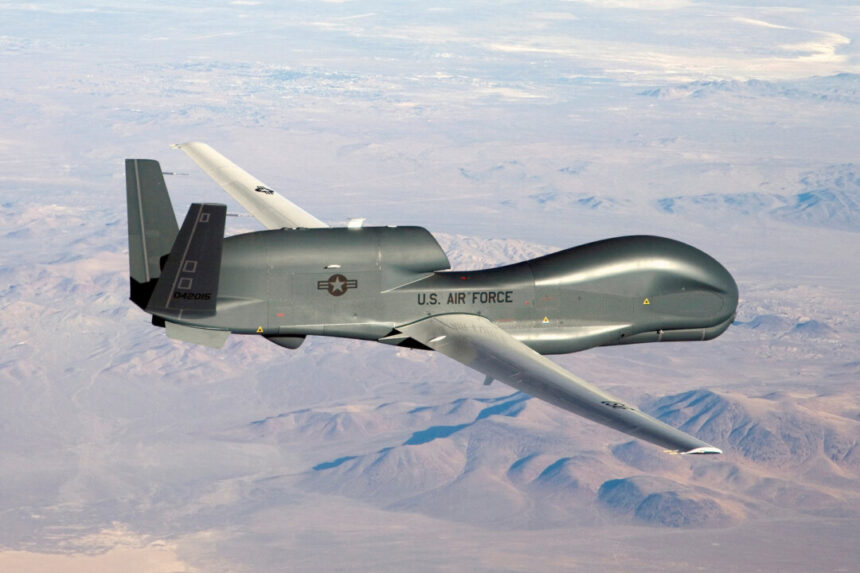Moscow is holding the U.S. responsible for a missile attack on June 23 that resulted in the death of four civilians near Sevastopol, Crimea’s port.
Russia’s defense ministry is exploring ways to react to what it deems as “provocations” by U.S. drones operating over the Black Sea.
“Defense Minister Andrey Belousov has directed the General Staff of the Armed Forces to develop recommendations for a swift response to the [U.S.] provocations,” the ministry stated on June 28.
The ministry noted an increase in U.S. drone activity in the area, suggesting it was for reconnaissance and gathering information on potential Russian targets.
“This demonstrates the heightened involvement of the United States and NATO nations in the conflict in Ukraine, supporting the Kyiv regime,” the ministry emphasized.
“This also raises the risk of potential incidents involving Russian military aircraft in the region, escalating the potential for direct confrontation between NATO and Russia.”
Past incidents involving U.S. and Russian military aircraft have occurred, including a Russian Su-27 fighter jet intercepting and damaging an American MQ-9 Reaper drone in the Black Sea last year.
The clash marked the first direct confrontation between Russian and U.S. military forces since the end of the Cold War in 1991.
The U.S. State Department and Department of Defense have not responded to inquiries regarding the Russian ministry’s statement.
Five days after the Ukrainian military conducted a missile attack using ATACMS missiles in Crimea, Russia’s defense ministry made its claims.
The assault on June 23, which utilized ATACMS missiles, resulted in the deaths of four civilians on a beach near Sevastopol, home to Russia’s Black Sea Fleet.
Moscow has swiftly accused the United States, the supplier of the ATACMS missiles used in the attack.
Russia’s foreign ministry has alleged that “American specialists” identified targets for the attack based on U.S. satellite reconnaissance data.
The ministry also claimed that a U.S. Global Hawk reconnaissance drone was present near Crimea during the missile attack.
When questioned about these claims, a U.S. State Department spokesperson stated that the casualties on the Sevastopol beach were not the intended target.
“We believe a Russian air-defense missile intercepted a Ukrainian missile destined for a military target in Crimea, resulting in civilian injuries from the intercept debris,” the spokesperson clarified.
The spokesperson also addressed the alleged involvement of “American specialists,” stating that Ukraine independently selects its military targets and makes decisions on strikes.
Kyiv has refrained from commenting on the June 23 missile attack, denying any targeting of civilians by its military.
Previous reports indicated the use of U.S. ATACMS missiles against Russian positions in Crimea, with Russia’s defense ministry claiming to have downed six incoming missiles in April.
Ukraine confirmed launching long-range missiles at two Russian airbases in Crimea, resulting in no casualties or damage.
In contrast, the June 23 attack prompted threats of retaliation from Moscow, stating that such actions by Washington will not be left unaddressed.
The escalating tensions led U.S. Defense Secretary Lloyd Austin to request a call with Mr. Belousov, his Russian counterpart, to stress the importance of communication lines.
During the call, Mr. Austin highlighted the need for de-escalation due to the ongoing supply of American weapons to Ukraine, as conveyed by Russia’s defense ministry.
The last conversation between Mr. Austin and the then-Defense Minister Gen. Sergey Shoigu was in March 2023, with Mr. Belousov taking over the role in May 2024.
Reuters contributed to this report.
Please rephrase this sentence.
Source link





